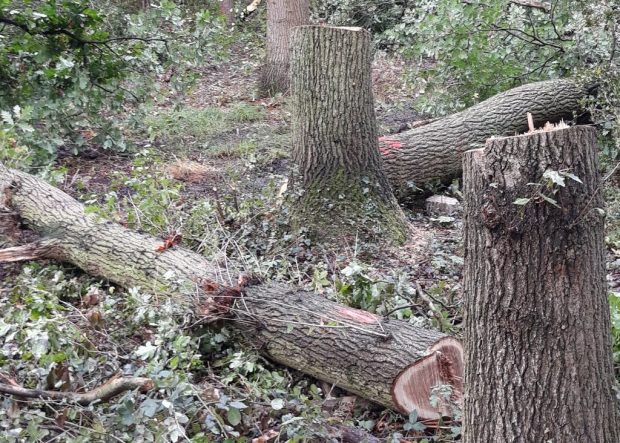

For many of us, the opportunity to exercise locally and enjoy the natural environment around us is very important to our wellbeing. This might be visiting a nearby park, nature reserve or woodland, or using a local cycle trail. Whichever it is, I’m sure you would agree the importance of protecting it for everyone to enjoy.
Taking a step back from our usually busy lives, I’ve certainly found that whilst enjoying local green spaces on a regular basis you tend to notice what’s in the landscape more than perhaps you might have done before.
So, why is our local environment this important that it needs protecting? Trees, woodlands and forests are sensitive spaces. They provide shelter and food for wildlife and are important habitats for our own recreation. The spaces they take up form part of the wider landscape we see around us; one we have treasured for millennia. We now understand just how much they can reduce the impact of climate change by absorbing carbon dioxide as they grow, improve water quality, alleviate flooding and reduce soil erosion.
Trees and woodlands also provide us with valuable timber resources which are needed to make a wide range of daily products, and as biomass for fuel and energy production. The felling of trees is therefore a normal and important part of good woodland management. It is also key to sustaining good woodland condition by letting in light that allows natural regeneration to happen and wildlife to thrive.
Therefore, our local trees and woodlands need to be managed in the right way and at the right time of year, and most importantly, that the felling is managed legally. It goes back to my point above about protecting the environment and being aware of any changes taking place which may or may not have a detrimental effect on the landscape.
Before anyone can cut down trees, they may need to get a felling licence from the Forestry Commission.
It is an offence to fell trees without a licence, where one would have been required. There are some exceptions that can apply, but in many instances a felling licence will be required. These licencing measures are not new; they have been in force for 50 years. They help maintain compliance with environmental standards that ensure the sustainability of woodland management and wood production (UKFS) to protect England’s highly valued trees and woodlands. You can read more about this in our guide ‘Tree Felling – getting permission’ which explains when a felling licence is needed and how to apply for one.
As the Government’s forestry experts, we are continuing to carry out our functions as the forestry industry regulator, as plant health inspector and as government advisor during these challenging times. These duties include continuing to process what will be several thousand felling licence applications this year, applied for via the Felling Licence Online system, and, as you might expect, investigating instances of alleged illegal felling.

As I mentioned before, there are some circumstances where a felling licence isn’t needed and therefore felling trees isn’t illegal. Some examples of this are:
If you are concerned about local tree felling, and, having ruled out these scenarios above you still suspect anyone of cutting down trees without permission, then you should follow our advice online about reporting the suspected illegal felling incident to us.
To help us to manage and respond to reports of alleged illegal felling, there are some checks that you should do before you do report an incident to us. These include checking if a felling licence is already in place for the work, or if the work is part of infrastructure management e.g. by highways authorities, energy network companies or railway authorities.
If these checks don’t satisfy your concerns, you should report this incident to us at the Forestry Commission. We will need some details from you about the tree felling in order to investigate, such as the exact location, when the felling started, and who is doing it. This information will allow us to investigate the report and assess whether a felling licence was required or not, and where one was, to take the necessary enforcement action.
It is heartening that the public often act as our eyes and ears by proactively reporting instances of alleged illegal felling when something doesn’t seem quite ‘right’; helping to protect our trees, woodlands and forests from long term and even irreversible damage. So for that, thank you.
As the regulator we will, as always, continue to investigate the reports that we receive whilst following current advice on social distancing, assess and monitor compliance of approved felling licences, and pursue enforcement action on individuals and organisations who fail to comply with the rules, protecting our trees and woodlands for future generations to enjoy.